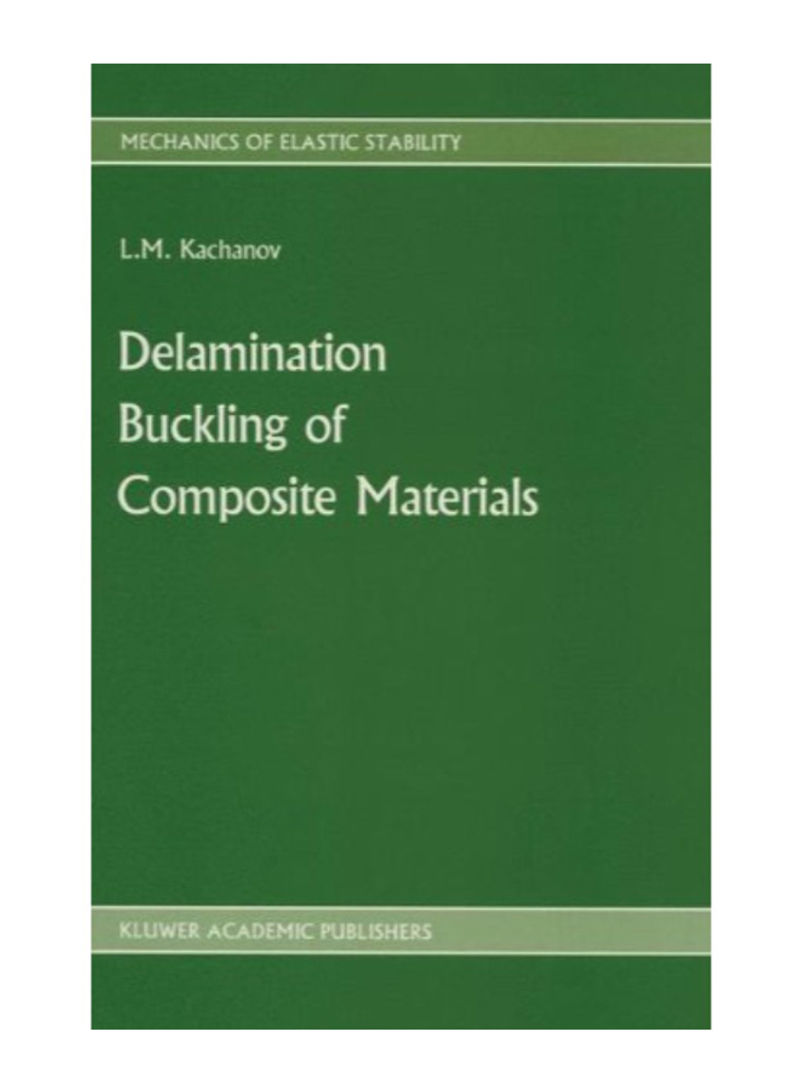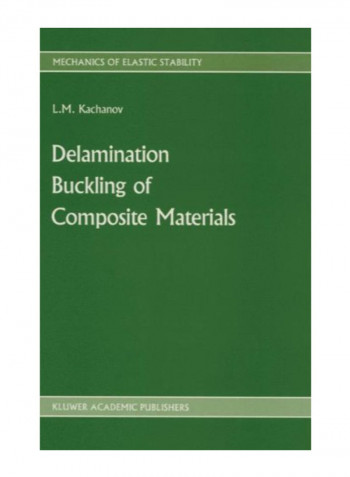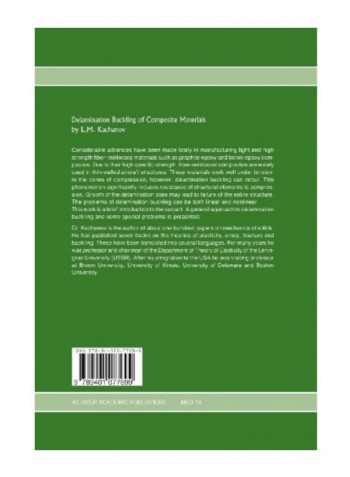Delamination Buckling Of Composite Materials Paperback
Recommend
Sort by
Rating
Date
Specifications
Author 1
L. M. Kachanov
Book Description
LIOn Delamination of Laminated Composites a Fiber-Reinforced Composites Considerable technological advances in the production of high-strength fibers graphite, boron, etc. have led to a wide use of light high-strength composite materials graphite epoxy, boron-epoxy, etc.. It is expedient, to make thin walled composite rods, plates, and shells from such materials. Plates can be made by bonding a set of unidirectional thin fiber layers, Fig.l.l. Such plates are orthotropic, as a rule. A random short-fiber composite is shown in Fig. 1.2. Fiber-reinforced composites are widely used in thin-walled aircraft structures because of their specific high strength. For example, the graphite-epoxy composite is characterized by a unidirectional tensile strength of 1.4 GPa while the density is 1.6 Mg/rrt? . For comparison, we may take a steel steel 4340 whose corresponding properties are identified by values like 1.2 GPa and 7.8 Mg/rrt? . 1. INTRODUCTION Figure 1.1 2 1.1. On Delamination of Laminated Composites Figure 1.2 3 1. INTRODUCTION It is characteristic for laminated plastic material to possess a fairly low bonding. Therefore, low-velocity impacts and defects in manufacturing lead to local delamination. b Linear Problems of Delamination Buckling Delamination can significantly reduce the compressive strength and stiffness of the laminate. Local delamination can be considered as a crack in the bond. Under buckling there appears a high interlaminate stress at the crack edge that leads to a spreading of the crack. Delamination growth can lead to structural instability.
ISBN-13
9789401077699
Language
English
Publisher
Springer
Number of Pages
96




